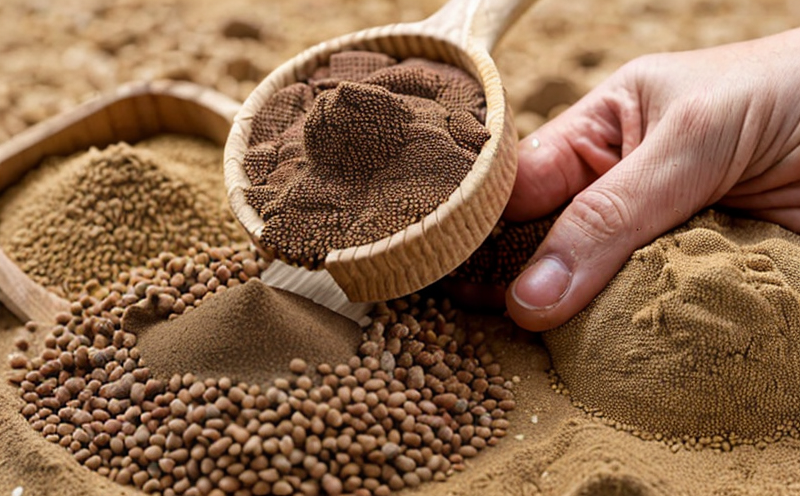Threonine Content Testing in Animal Feed
The testing of threonine content in animal feed is a crucial aspect of ensuring nutritional quality and safety. Threonine is one of the essential amino acids that cannot be synthesized by animals and must be obtained through their diet. Ensuring adequate levels of this amino acid is vital for animal health, growth, and productivity.
Animal nutritionists and feed manufacturers rely on precise threonine content testing to meet nutritional requirements tailored to different species such as poultry, swine, dairy cows, and beef cattle. The accuracy of these tests directly impacts the performance and welfare of livestock, which in turn affects farm profitability and environmental sustainability.
Inadequate levels of threonine can lead to deficiencies that impair growth rates, reproductive success, and overall health. Conversely, excesses may result in suboptimal feed conversion efficiency and increased production costs. Therefore, accurate analysis is essential for optimizing feed formulation, ensuring compliance with international standards such as ISO 6891-2, and achieving the desired nutritional balance.
Testing methodologies typically involve sample preparation using analytical grade reagents and precise weighing techniques to ensure accuracy. The samples are then analyzed using high-performance liquid chromatography (HPLC) or gas chromatography-mass spectrometry (GC-MS), which provide reliable quantification of threonine content.
| Method | Sensitivity Range | Sample Size | Turnaround Time |
|---|---|---|---|
| HPLC | 0.1-2 mg/mL | ~5 g | 3-4 hours |
| GC-MS | 0.01-0.5 mg/mL | ~1 g | 4-6 hours |
The choice between HPLC and GC-MS depends on the sensitivity required for detection, as well as the sample size available.
Why It Matters
Accurate threonine content testing is not only about compliance with regulations but also about enhancing animal health and productivity. By providing precise data on threonine levels, laboratories can help feed manufacturers improve their products' quality and consistency.
The importance of this service extends beyond just the feed industry; it influences broader sectors such as agriculture, veterinary medicine, and environmental science. For instance, in precision farming, knowing the exact threonine content helps tailor feeds to specific animal needs, reducing waste and improving resource efficiency.
From a regulatory perspective, compliance with standards like ISO 6891-2 ensures that feed meets international quality benchmarks, which is critical for exports and market access. In terms of environmental impact, ensuring optimal threonine levels in diets can minimize the use of antibiotics, thereby reducing antibiotic resistance concerns.
Competitive Advantage and Market Impact
The ability to provide accurate and reliable threonine content testing gives laboratories a competitive edge in the market. Feed manufacturers who partner with such labs gain access to high-quality data that can inform their product development strategies, leading to better-performing feeds.
This service also supports research and development efforts aimed at creating more sustainable animal feed formulations. By understanding how threonine interacts within different dietary contexts, researchers can innovate new products tailored to specific environmental conditions or health needs of livestock.
The market impact is significant as it contributes to improving overall agricultural productivity while promoting responsible use of resources. This aligns with global trends towards more efficient and environmentally friendly practices in animal husbandry.
Use Cases and Application Examples
- Feed Formulation Optimization: Ensuring the right balance of threonine helps optimize feed formulations for maximum efficiency.
- Nutritional Assessment: Regular testing allows for continuous monitoring of nutritional content in feeds over time.
- Regulatory Compliance: Meeting international standards ensures compliance and facilitates market entry.
- Sustainability Initiatives: By minimizing waste through precise formulations, labs support sustainable farming practices.
| Example Application | Description |
|---|---|
| Poultry Feed Optimization | Determining optimal threonine levels for broilers to enhance growth rates without exceeding recommended limits. |
| Cattle Feeding Programs | Ensuring adequate threonine content in dairy cow diets to maximize milk production while maintaining cow health. |
| Pig Nutrition Studies | Evaluating the effects of varying threonine levels on piglet growth and feed efficiency. |





